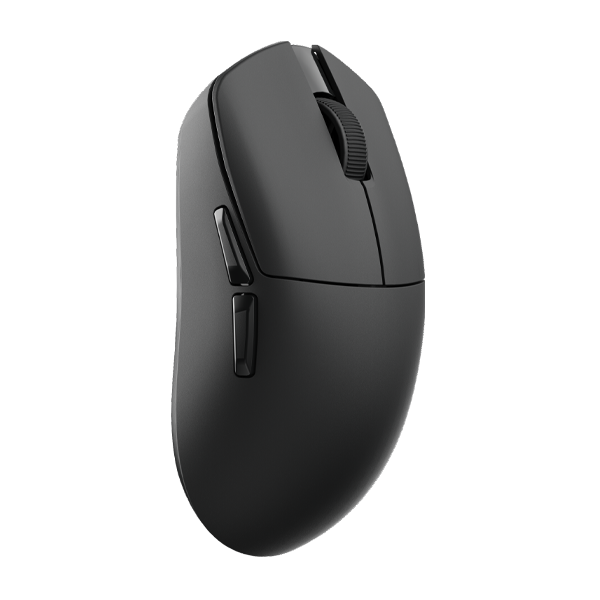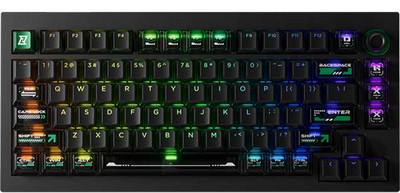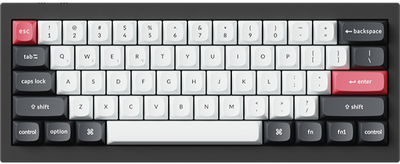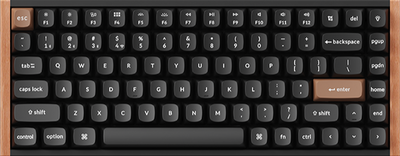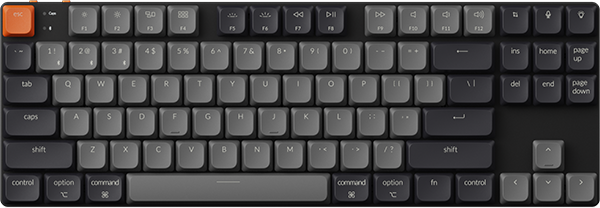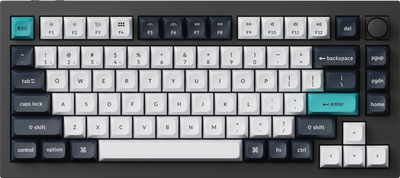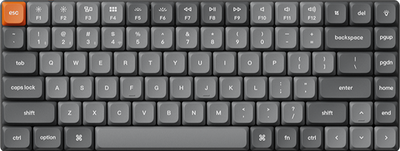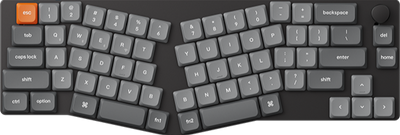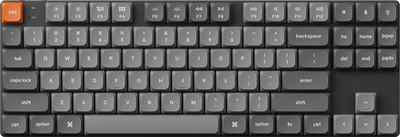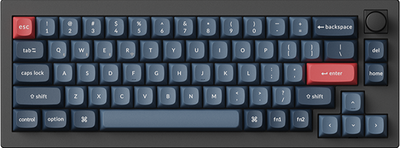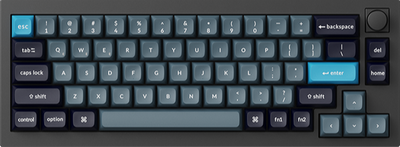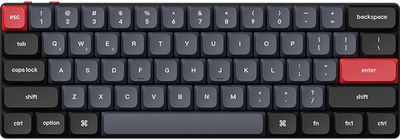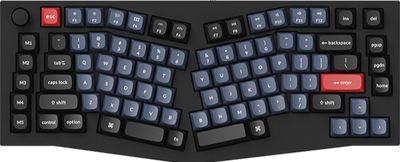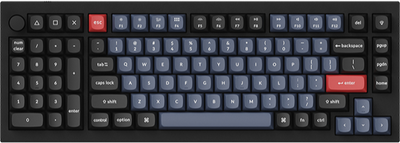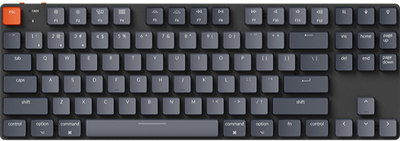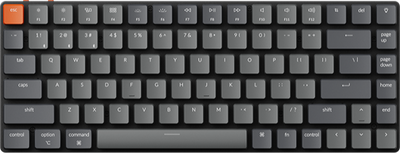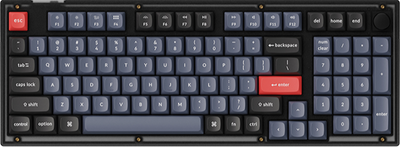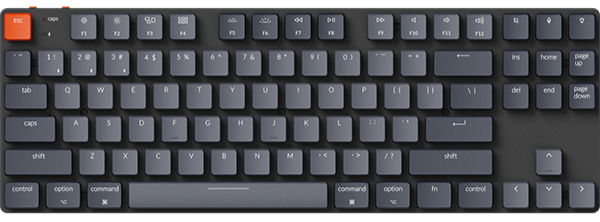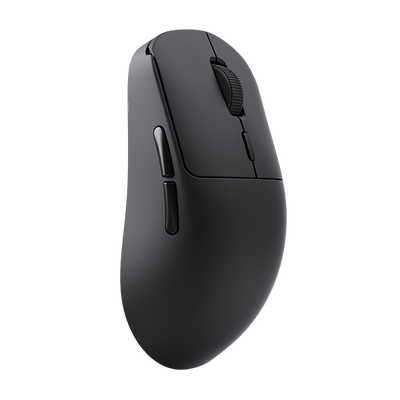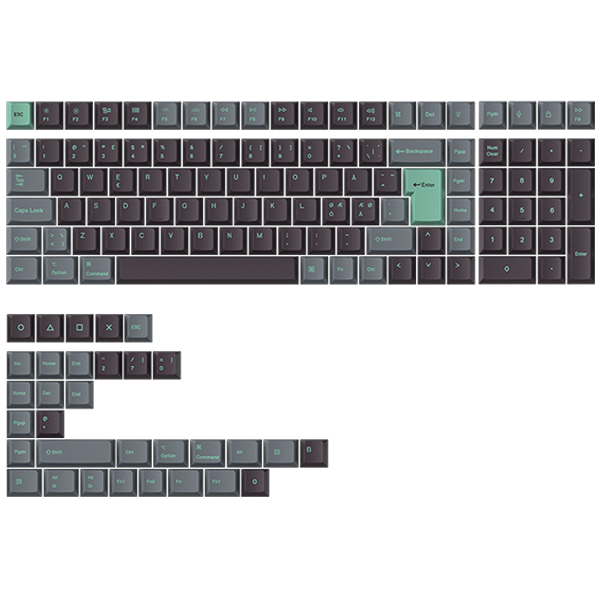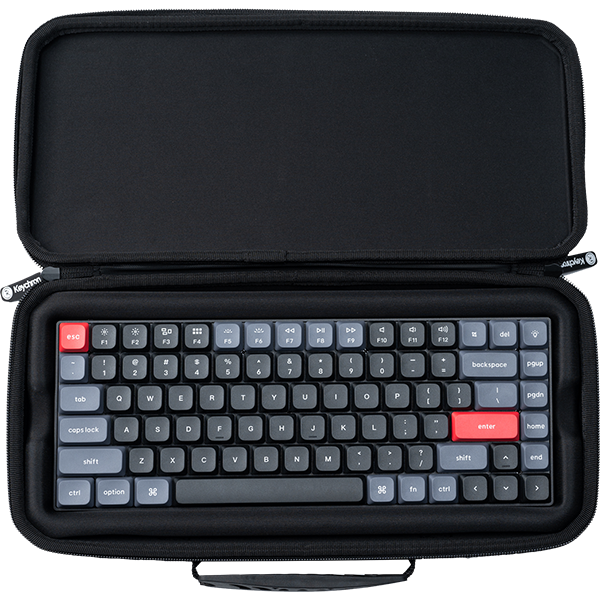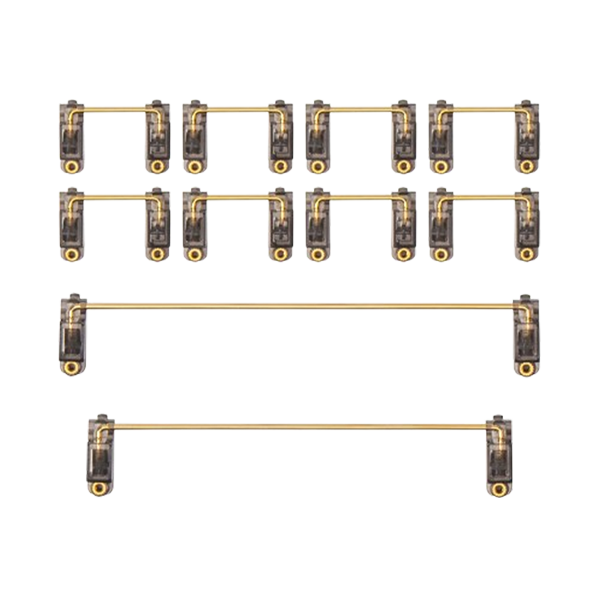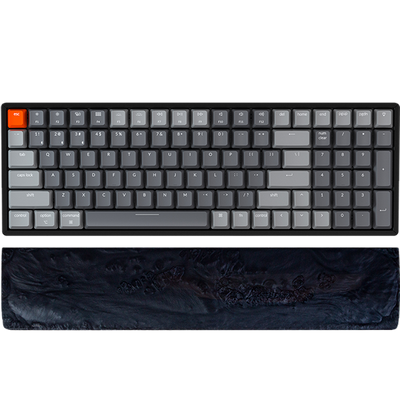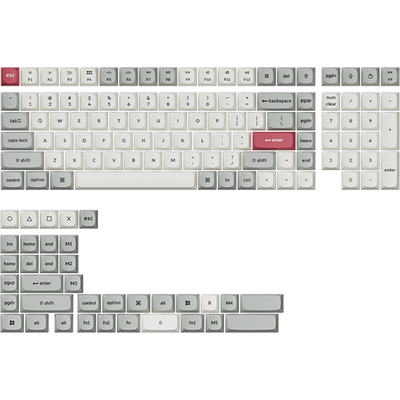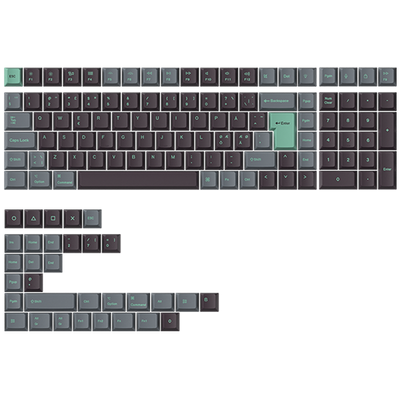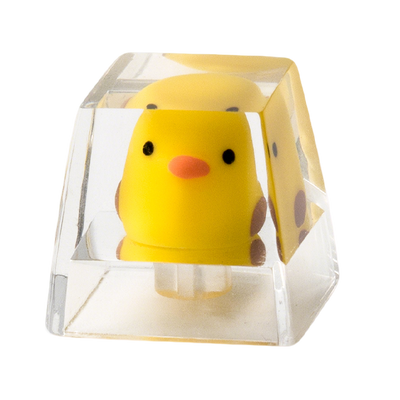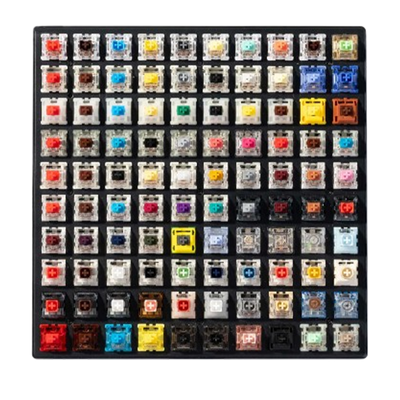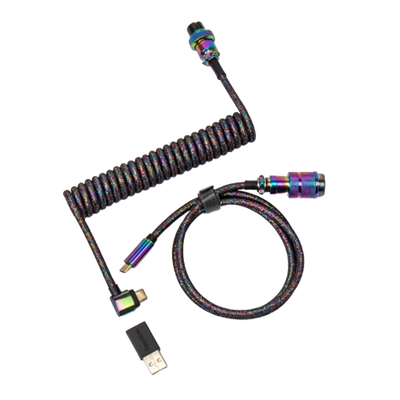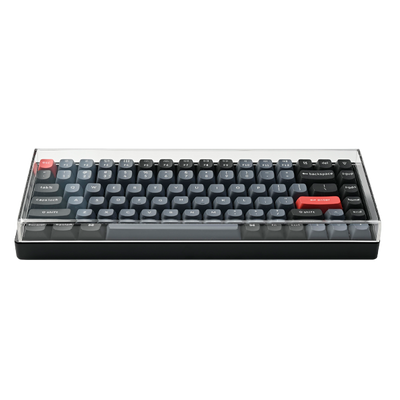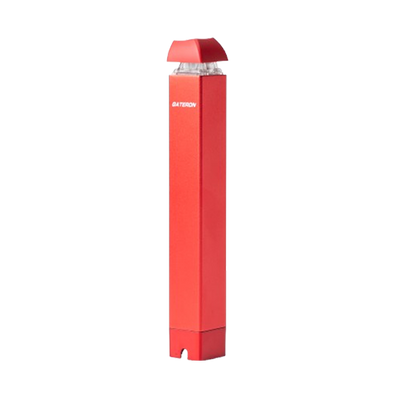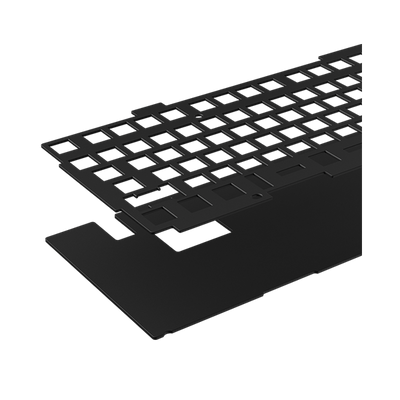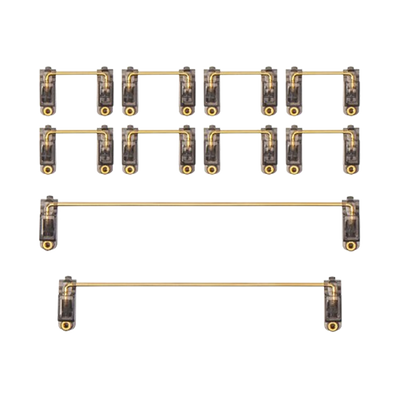Do linear switches and tactile really feel different? Your choice between linear and tactile can seriously impact your typing and gaming experience. Whether you're coding the next big app or trying to beat your high score, the right switch can make all the difference.
Curious about which one might be your perfect match? Keep reading to unlock the secrets of switch selection and level up your keyboard game!
Do Linear Switches and Tactile Switches Actually Feel Different?
Yes, linear and tactile switches feel distinctly different. Linear switches provide a smooth, consistent keystroke without any feedback, while tactile switches have a noticeable bump during the press. This difference in physical feedback can significantly impact typing experience and user preference.
Linear vs. Tactile Switches: Key Differences
Each type has unique features that affect sound, feel, speed, durability, and options available. Here’s a closer look at what sets them apart.
Linear vs. Tactile Switches: Summary Table
|
Feature |
Linear Switches |
Tactile Switches |
|
Sound and Noise Level |
Operate quietly; minimal sound during keystrokes |
Noticeable sound due to tactile bump; moderate noise |
|
Feel and Feedback |
Smooth keystroke; no bumps |
Provides feedback with a noticeable bump |
|
Speed and Actuation Force |
Requires less actuation force (45-60 grams); ideal for rapid keypresses |
Similar actuation force; tactile feedback may slightly slow typing |
|
Durability and Longevity |
Rated for over 50 million keystrokes; similar durability to tactile switches |
Also rated for over 50 million keystrokes; similar durability |
|
Colors and Variants |
Commonly red, black, and silver; known for smooth keystrokes |
Commonly brown or banana; distinct bump feedback |
|
Resistance and Spring Force |
Lighter springs for quick keystrokes |
Similar spring resistance; may feel firmer due to the bump |
|
Best For |
Gaming, especially FPS and fast-paced genres; touch typists who prefer smooth keystrokes |
General typing, programming, and users who value tactile feedback; light gaming |
Sound And Noise Level
Linear switches operate quietly, making them ideal for environments where noise is a concern. They produce minimal sound during keystrokes, allowing you to type without disturbing others.
In contrast, tactile switches have a noticeable sound due to the tactile bump. While they are quieter than clicky switches, they can still create a moderate noise.
If you prefer a quiet workspace, linear switches might be a better choice. If you're looking for some feedback while typing, tactile switches will give you that without being too loud.
Feel And Feedback
The feel of keys is a major factor in typing comfort and performance.
Linear switches offer a smooth keystroke from top to bottom without any bumps. This makes them great for rapid keypresses, especially in gaming.
Tactile switches provide feedback through a noticeable bump along the way. This tactile bump signals that the key has registered without needing to bottom out, improving typing accuracy.
If you enjoy knowing exactly when a key has registered, tactile switches might suit you better.
Speed And Actuation Force
Speed is crucial for gamers and typists who value quick responses.
Linear switches often require less actuation force, typically between 45-60 grams, allowing for rapid keypresses.
Tactile switches generally require a similar actuation force, but the feel of the bump can influence how quickly you type.
You may find that the tactile feedback slightly slows your typing down compared to linear switches. However, for many, the advantages of feedback outweigh the minor difference in speed.
Gateron switches provide a smooth and satisfying keystroke that many users love. They come in various options to suit different preferences. Check out our selection of Gateron switches to find your ideal match!
Durability And Longevity
Both linear and tactile switches are designed to last, with lifespans commonly rated for over 50 million keystrokes.
Their durability can depend on the manufacturer, but high-quality switches from reputable brands ensure longevity.
Factors such as wear from regular use can affect all switches. Regularly using linear or tactile switches generally results in similar durability.
You can expect both switch types to withstand extensive typing or gaming sessions without significant wear.
Colors And Variants
Switch colors often indicate different characteristics, such as actuation force and feel.
Linear switches commonly come in colors like red, black, and silver, known for their smooth keystrokes.
Tactile switches are commonly found in brown or banana variants, which provide the distinct bump. Each color corresponds to specific feedback and actuation points, helping you choose according to your preferences.
It’s essential to check the specifications for each variant to find the best fit for your needs.
Resistance And Spring Force
The spring force is a critical aspect of how switches perform.
Linear switches usually feature lighter springs, providing a gentle push against your fingers. This characteristic makes them suitable for quick, repeated keystrokes.
Tactile switches often have a similar spring resistance but may feel slightly firmer due to the tactile bump.
This bump provides feedback, allowing you to feel when a key has been activated. If you like a more pronounced resistance, tactile switches could be your ideal choice.
What Are Mechanical Keyboard Switches?
Mechanical keyboard switches are intricate components that provide a unique typing experience.
Each switch type adds a different feel and sound to your keyboard. Understanding the main types—Linear, Tactile, and Clicky—can help you make an informed choice about your keyboard.
Different Switch Types: Linear, Tactile, And Clicky
When learning about mechanical keyboards, understanding switch types is important. Here's a breakdown of the three main categories:
Linear Switches
Linear switches offer a smooth, consistent keystroke without any tactile feedback. They're characterized by:
- Even pressure from top to bottom
- No tactile bump or audible click
- Popular among gamers for rapid key presses
Common linear switches include Cherry MX Red and Gateron Yellow. These are often preferred in quiet environments or for extended typing sessions due to their lower noise profile.
Tactile Switches
Tactile switches provide a noticeable bump during the keystroke, indicating the actuation point. Key features include:
- A small bump felt when the key activates
- No audible click
- Balances typing feedback and noise level
Cherry MX Brown and Keychron Banana are well-known tactile switches. They're favored by typists who want feedback without the noise of clicky switches.
Clicky Switches
As the name suggests, clicky switches produce both tactile and audible feedback. They're known for:
- A distinct clicking sound when activated
- A tactile bump similar to tactile switches
- Providing a pronounced typing experience
Cherry MX Blue and Kailh Box White are popular clicky options. These switches are ideal for those who enjoy a more responsive and audible typing experience.
Remember, switch preference is highly personal. Many enthusiasts experiment with different types to find their perfect match. Factors like actuation force, travel distance, and sound profile can all influence your choice.
Whether you're coding, gaming, or writing, the right switch can significantly enhance your keyboard experience. Don't be afraid to try out different options to find what works best for you.
For a more detailed guide about different types of switches, read our guide: Types of Keyboard Switches: Linear vs Tactile vs Clicky.
What Are Linear Switches?
Linear switches are a popular option for keyboards, known for their smooth and consistent keypresses. They provide a unique feel that can enhance your typing or gaming experience.
How Do Linear Switches Work?
Linear switches operate using a straightforward design.
When you press a key, the switch moves straight down without any bumps or click sounds. This motion allows for smooth actuation, making it easy to press multiple keys quickly.
Characteristics Of Linear Switches
Linear switches have distinct features that set them apart:
- Smooth Keystroke: There are no bumps or clicks, providing an uninterrupted feel.
- Quiet Operation: These switches tend to be quieter than tactile or clicky switches, making them ideal for shared spaces.
- Variety in Actuation Force: Options like Cherry MX Silent Red offer a softer touch, while Kailh Red can provide a firmer feel.
The lack of feedback can be beneficial for those who prefer a clean typing experience without distractions.
Ideal Use Cases For Linear Switches
Linear switches are highly versatile and fit various scenarios.
- Gaming: Their smoothness allows for faster key presses, giving you an edge in competitive gaming.
- Typing: Many users find linear switches comfortable for typing since they don’t require much force and prevent finger strain.
- Office Environments: The quiet operation makes these switches suitable for offices where noise can be disruptive.
In short, linear switches excel in scenarios requiring speed and comfort without sound distractions.
What Are Tactile Switches?
Tactile switches are a popular choice among keyboard users who appreciate the feel of a tactile bump when typing. This feedback helps to inform you when a key has been actuated without needing to bottom out the switch.
How Do Tactile Switches Work?
Tactile switches contain a mechanism that creates a noticeable bump during the keypress.
As you press down on the key, you will feel this bump at the actuation point, which is where the switch registers the keystroke. This feature aids in typing accuracy as you can feel when the key has registered.
Characteristics Of Tactile Switches
Tactile switches are characterized by their tactile feedback and moderate sound level. When you press a key, the subtle bump helps you know that your input has been accepted.
Typically, tactile switches are quieter than clicky switches, making them a great choice for office environments. Some popular tactile switches include:
- Cherry MX Brown: Offers a gentle bump with moderate actuation force.
- Cherry MX Clear: Provides a more pronounced bump with higher resistance.
- Gateron Zealio: A much snappier and unmistakable tactile bump.
This means you get a good mix of comfort and performance, whether you are typing or gaming.
Ideal Use Cases For Tactile Switches
Tactile switches are well-suited for various scenarios.
They excel in typing tasks, where the feedback helps reduce errors. If you spend a lot of time on documents, the tactile bump improves confidence with each keystroke.
These switches are also good for gaming, especially in competitive situations. The feedback lets you know which keys have been pressed without needing to smash the keys down fully.
Whether you are a casual typist or a gamer, tactile switches can provide an enjoyable experience.
Kailh switches are known for their versatility and unique designs. They offer a range of tactile and clicky options for all types of users. Browse our collection of Kailh switches to find the one that suits you best!
How To Choose Between Linear And Tactile Switches
Selecting between linear and tactile switches can significantly impact your typing experience.
Consider your personal preferences, the type of tasks you perform, and budget when making your decision.
Personal Preferences: Smooth Vs. Tactile Feedback
Your typing style plays a key role in switch choice.
Linear switches provide a smooth feel without bumps or clicks, making them ideal for uninterrupted typing. If you enjoy a swift motion, these are well-suited for fast-paced gaming and fast typing.
Tactile switches, in contrast, offer a noticeable bump when a key is pressed. This feedback can enhance typing accuracy, as it gives a clear indication of when a key has been actuated.
If you prefer feeling the key action, tactile switches might be more your style.
Ultimately, it comes down to personal preference: if you want silence and speed, go with linear; if you enjoy feedback, choose tactile.
Use Case Considerations: Gaming, Typing, Mixed Usage
For gaming, linear switches often stand out. Their quick response time and smooth action make them excellent for FPS gaming where speed is essential.
Many gamers prefer them because they reduce finger fatigue during long sessions.
For typing, tactile switches can enhance productivity. The feedback helps maintain typing speed and boosts typing accuracy.
If you’re someone who spends hours writing or programming, you might appreciate this feedback.
If you have a mixed use case, think about how you balance gaming and typing tasks. You may prefer switching between linear for gaming and tactile for typing, depending on what you’re doing at the time.
Wireless keyboards offer flexibility and convenience, freeing you from tangled cords. They are perfect for both home and office setups. Take a look at our selection of wireless keyboards to find the perfect blend of style and functionality!
Budget Considerations And Price Differences
Price can also influence your choice. Generally, both linear and tactile switches are available across various price points.
High-end options like custom mechanical switches may cost more but often offer better durability and performance.
When setting your budget, consider the long-term investment in your keyboard.
Spending a bit more on quality switches may enhance your experience, benefiting both typing and gaming activities.
Conclusion: Which Switch Type Is Right For You?
Choosing between linear and tactile switches depends on your preferences and how you use your keyboard.
Linear switches provide a smooth, quiet keystroke, making them ideal for fast typing and gaming, as they require less force to press.
Tactile switches, on the other hand, offer a noticeable bump with each keystroke and produce moderate sound, making them great for typists who enjoy feedback without loud clicks.
If you game or type quickly, linear switches may be best for you, while tactile switches can enhance accuracy for frequent typists.
To find the right fit, try different switches in-store or on a switch tester. For all your keyboard needs, check out Keychron's keyboard switches, which offers a great selection to meet every preference!
Frequently Asked Questions
What is the difference in feel between tactile and linear switches?
Tactile switches have a noticeable bump during the keystroke, providing feedback when the key is activated. In contrast, linear switches have a smooth action without any bumps, allowing for a consistent feel when pressed.
Which switch type is preferable for gaming, linear or tactile?
Many gamers prefer linear switches for their smooth keystrokes and quicker actuation. This allows for rapid key presses without the interruption of a tactile bump, giving players an edge in competitive situations.
Is there a significant performance difference between tactile and linear switches for typing?
The performance difference can vary based on personal preference. Some people find tactile switches better for typing due to the feedback they provide, while others prefer the smoothness of linear switches for faster typing without interruption.
Do professional gamers generally choose linear or tactile switches?
Professional gamers often lean towards linear switches for their speed and responsiveness. The consistent feel of linear switches helps in executing quick actions, which is crucial in high-stakes gaming.
How do silent linear switches compare to silent tactile switches in terms of feel?
Silent linear switches offer a smooth keystroke without noise, much like standard linear switches. Silent tactile switches still provide feedback with a bump but are designed to minimize sound, making them a quieter option for those who prefer tactile feedback.
What are the reasons some gamers prefer linear switches over tactile ones?
Gamers may choose linear switches for their quick response and the ability to press keys rapidly.
The absence of feedback bumps can lead to faster gameplay, as there is no hesitation between key presses.






